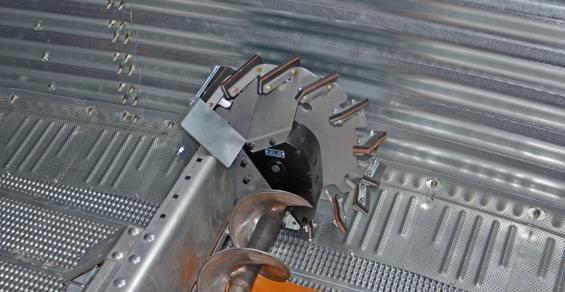Monitor grain and take steps to keep it in condition.
If you stored $250,000 in cash inside a grain bin, you would rig up a security system. Gary Woodruff suggests corn is as valuable as money. You don’t need a security system. Simply practice good stewardship to maintain grain quality.
Woodruff is a district representative for GSI in northern Indiana and a grain management specialist. Here are his answers to key questions about maintaining grain into summer.
I will hold corn through spring. How often should I check it? How? Check weekly. Use all your senses. Without entering the bin, look at grain surface for off color or mold. Notice off smells. If reachable, take a sample off the surface. Check moisture. Crusting is a bad sign. If it’s gaining moisture, it’s highly likely there is out-of-condition grain in the bin.
We’re seeing more owners use carbon dioxide monitoring, either manually at each inspection or automatically using a monitoring system. A bin monitoring system like the GSI GrainVue helps with monitoring. It’s still important to make weekly or biweekly physical inspections.
How do I warm grain and keep it in good condition? If grain will definitely be shipped by spring, consider leaving it cold. Seal the fan and unload openings. If you’re storing past spring, keep grain within about 10 degrees F of the average ambient temperature. If grain temperature is too far from ambient temperature, condensation can occur.
Bring grain back up to around 50 degrees. Hold it there using evening’s cooler temperatures, particularly if it’s to be stored all summer. An automated aeration system will do this job much better than it can be done manually.
Some of my bin fans provide 1 cfm airflow, and some only 0.1 cfm. How do I aerate to keep grain in condition? Aeration has one use in storing grain: changing temperature of the grain mass. Varying amounts of aeration in each bin just affect how long it takes to change the temperature of all grain. Aeration by itself will not hold or save out-of-condition grain. Cooling the grain improves how long the grain can be stored.
The more airflow in the bin, the higher the static pressure. It creates heat of pressurization, raising the temperature of aeration air. Normally at low levels such as 0.2 cubic feet per minute per bushel, temperature rise is not much of a factor. But at higher levels, such as 1 cfm per bushel or higher, it can be 10 degrees or more. You must adjust for it to get grain to the desired temperature.
For instance, if at harvest you’re trying to get grain to 50 degrees, at which insect and mold activity nearly stops, and you have a 10-degree heat of pressurization rise, you need 40-degree ambient conditions to get there. An automated aeration controller takes this difference into consideration.
What causes grain held until June to go out of condition? Grain moisture content and grain temperature are the key factors. Moisture of the grain put into the bin is the best indicator and most likely cause of going out of condition if it was too wet. To hold until June, grain should go into the bin at 14%. To hold until spring, grain should be no higher than 15%. To hold past one year, it should go in at 13%.



